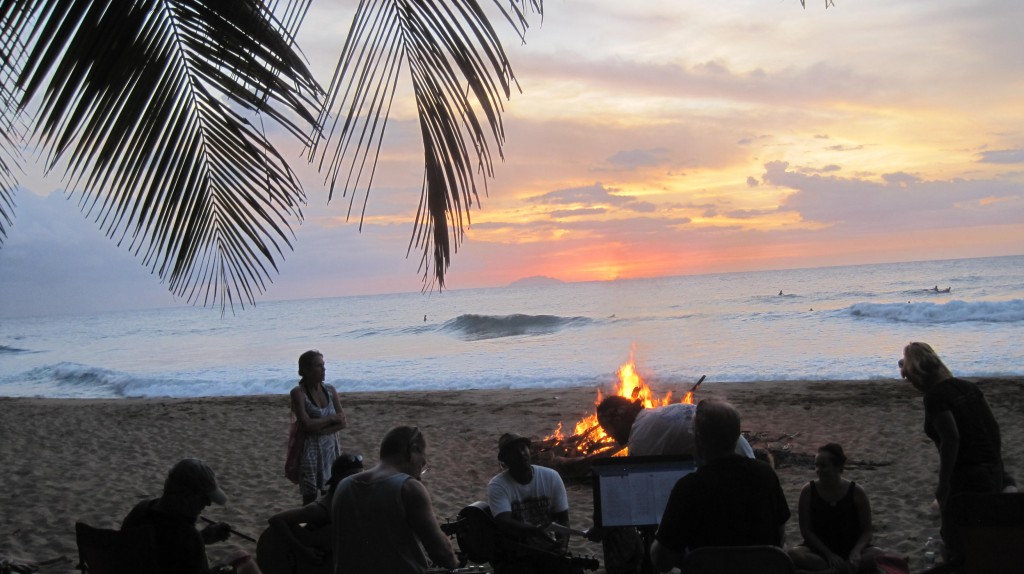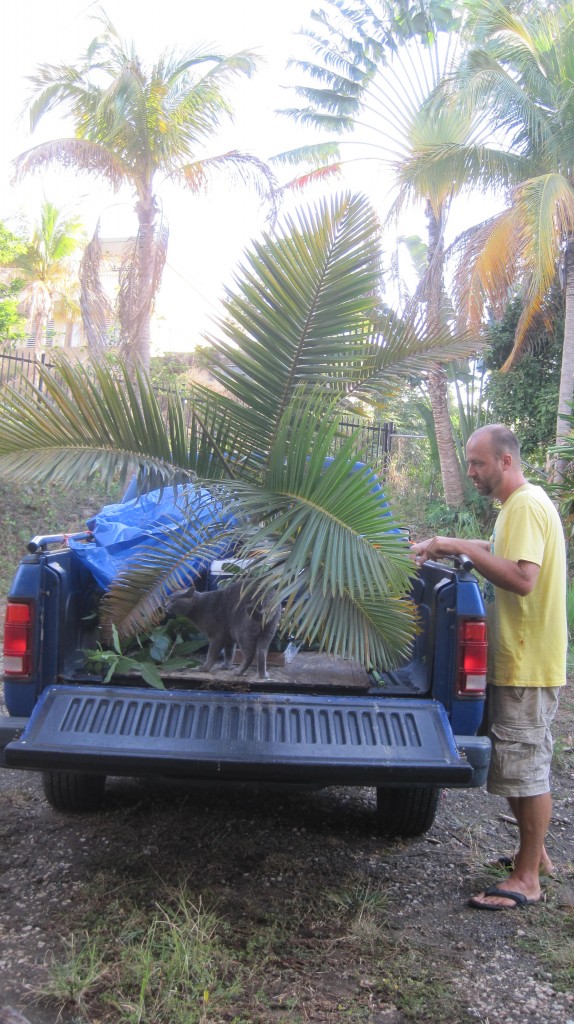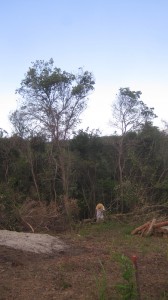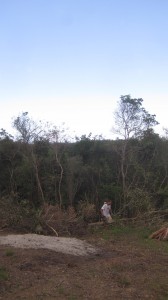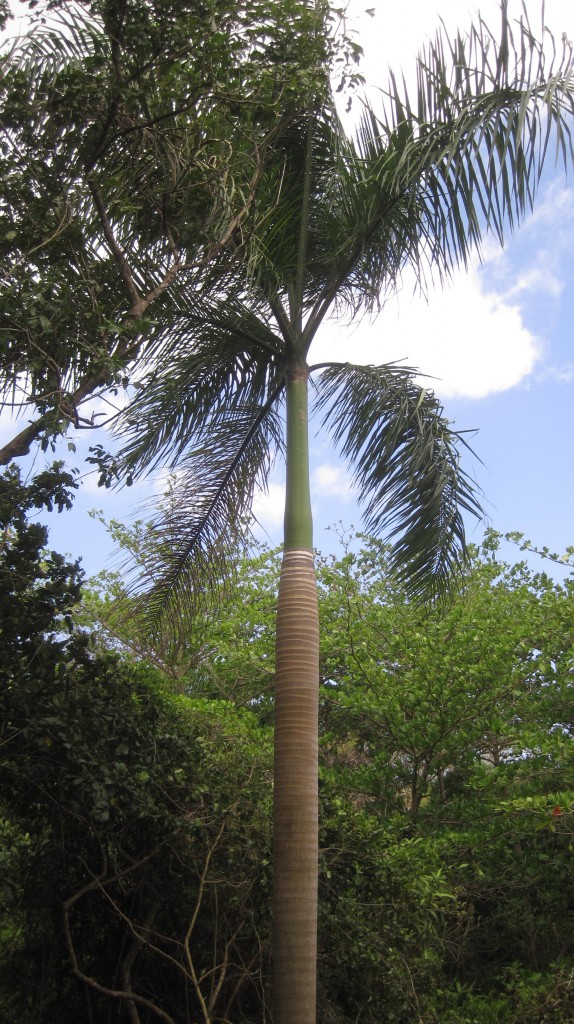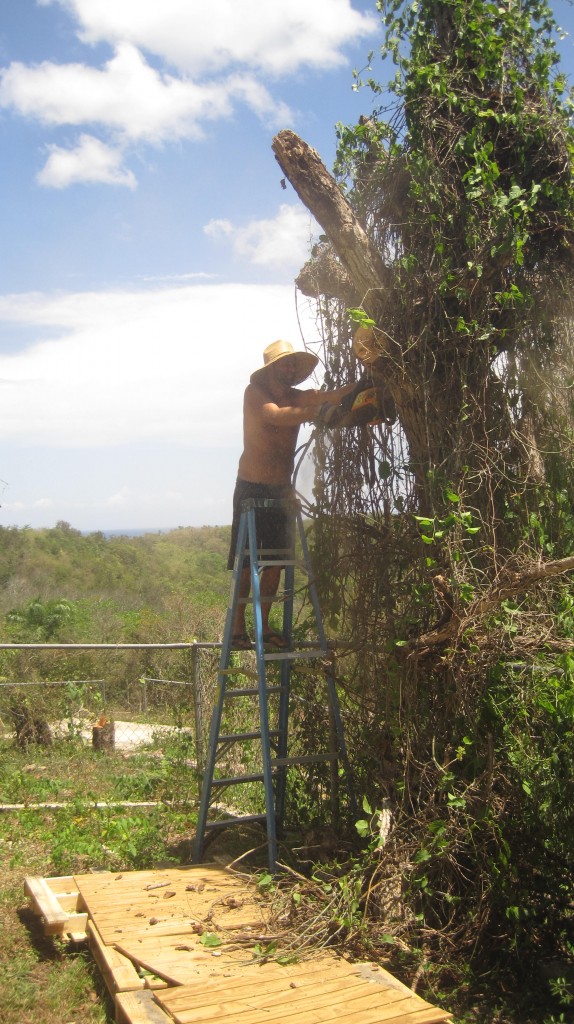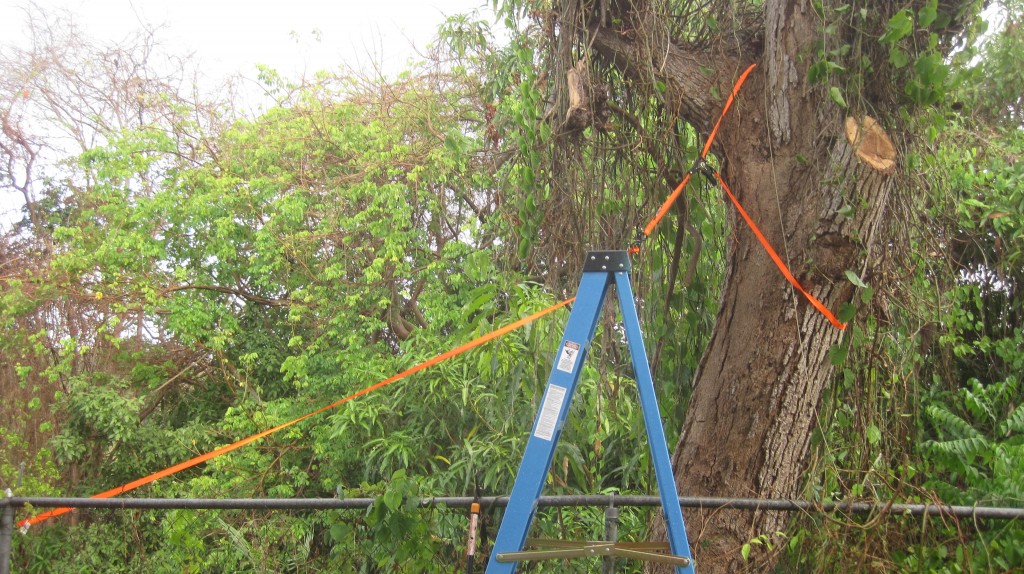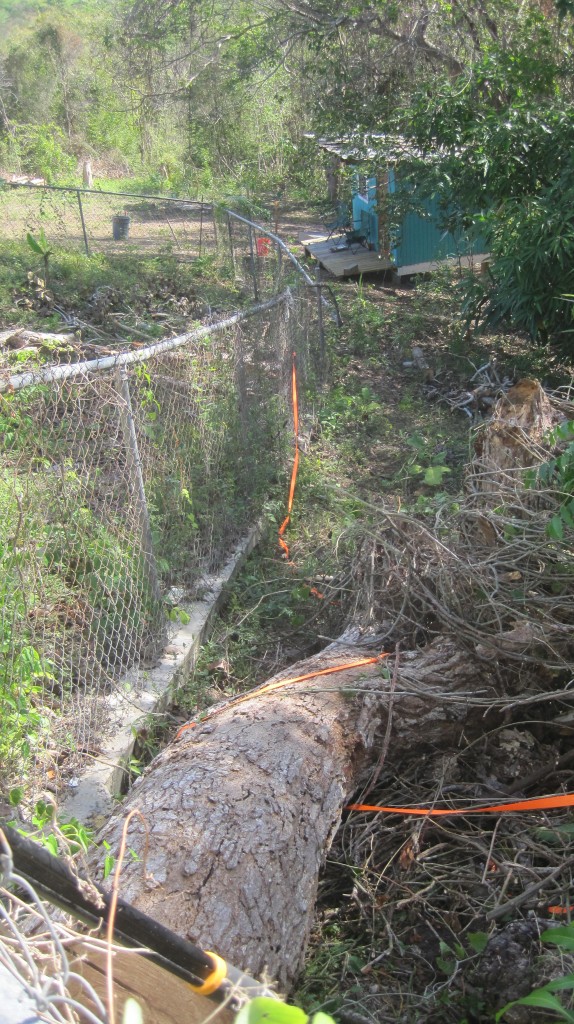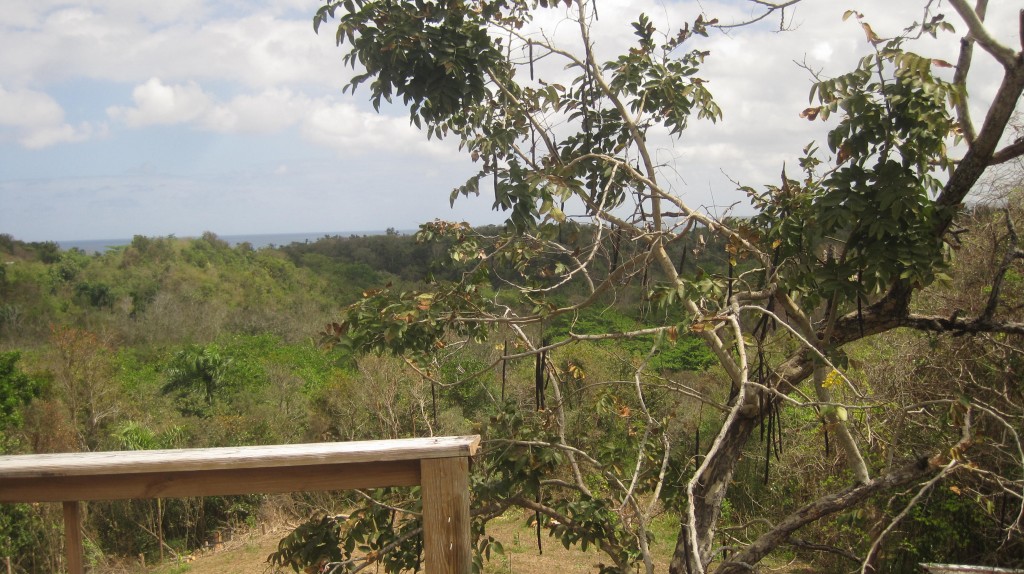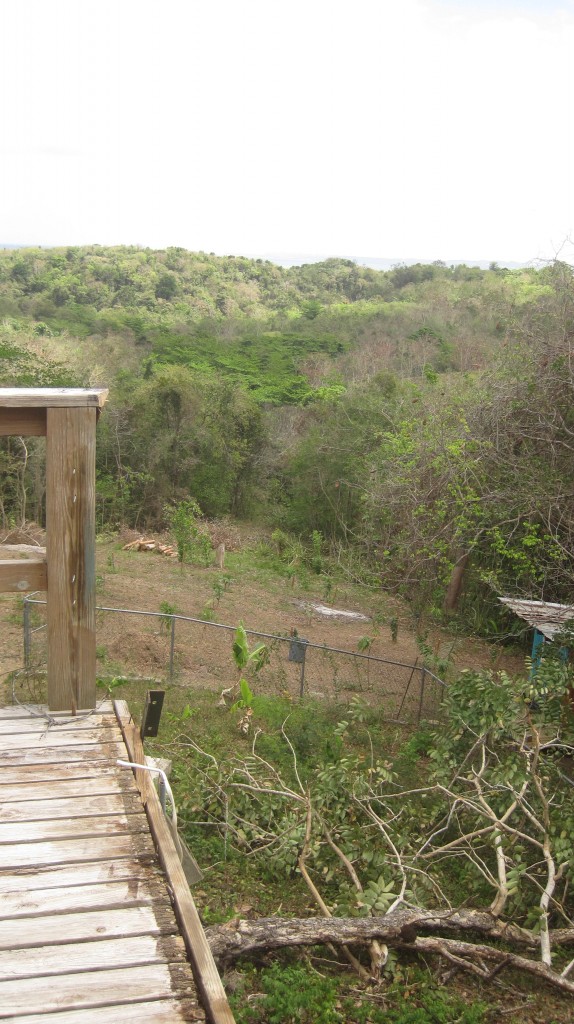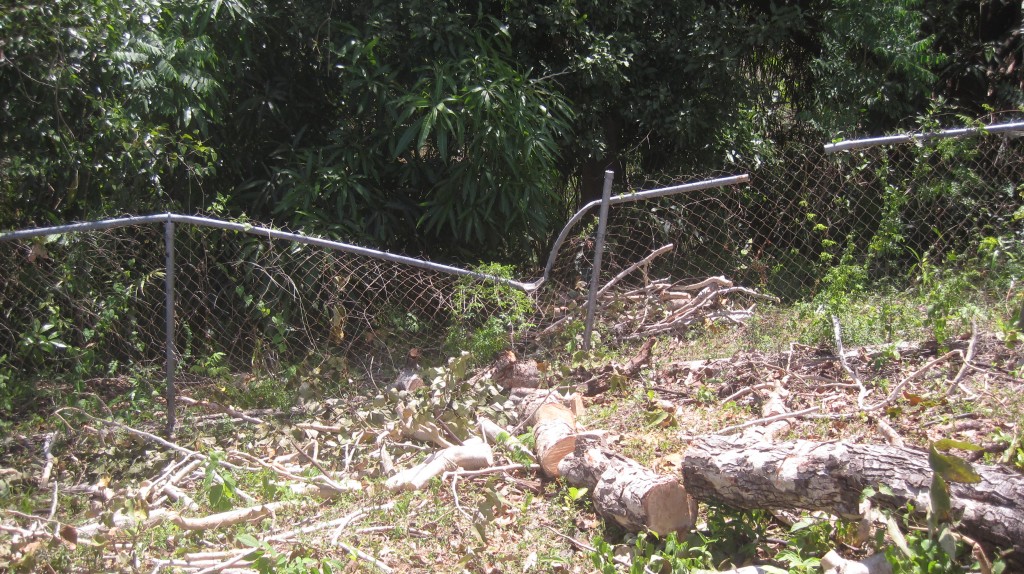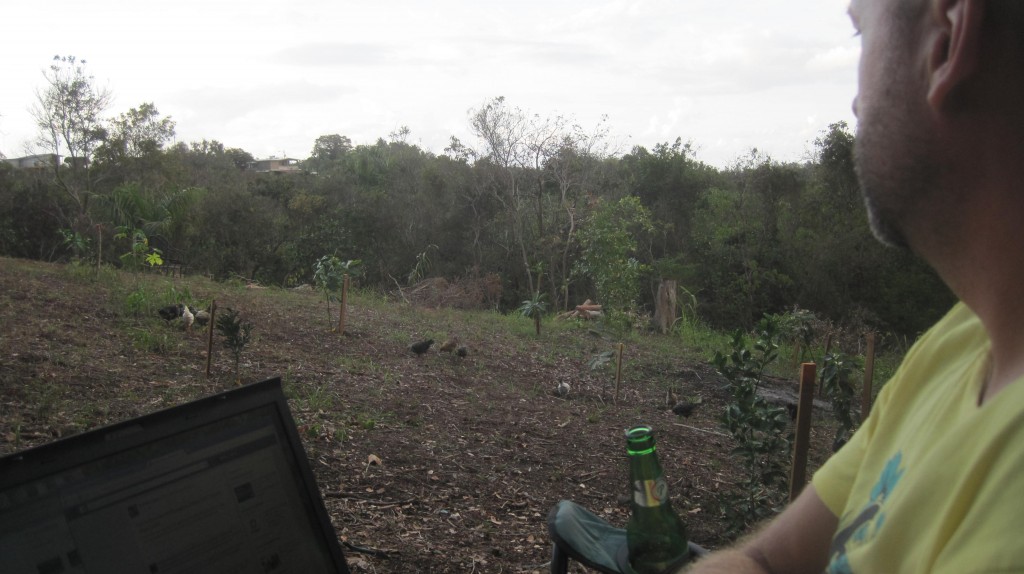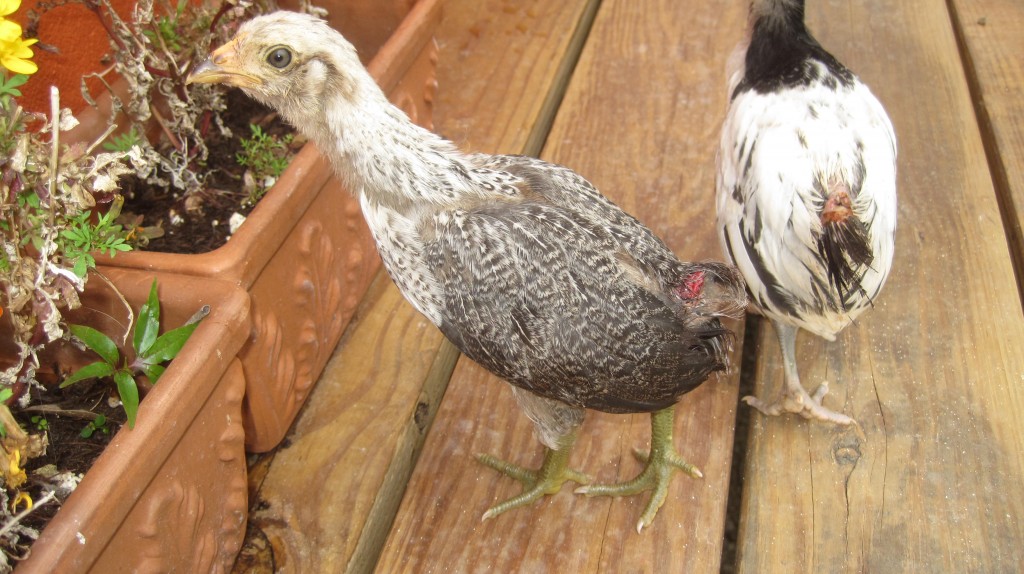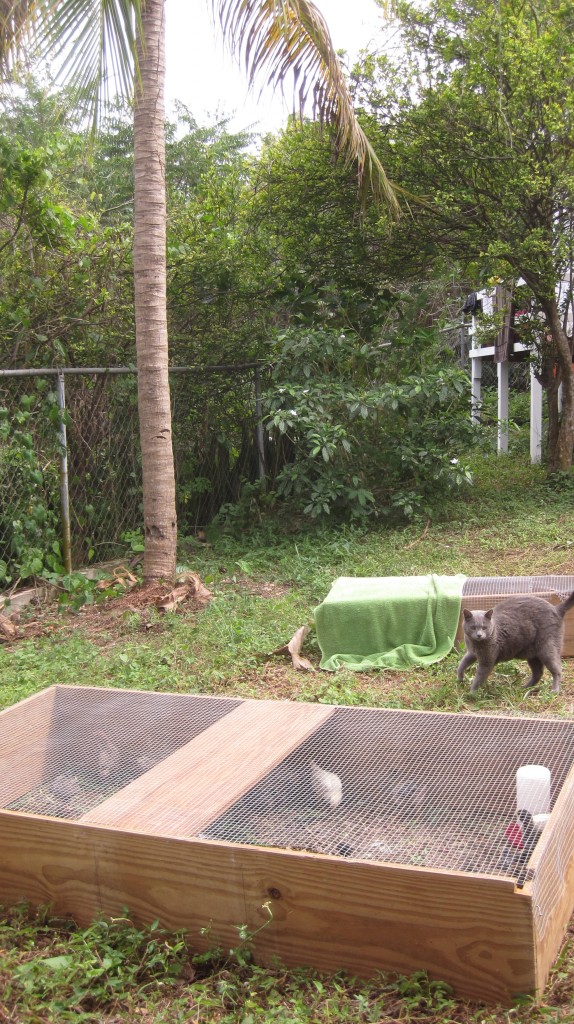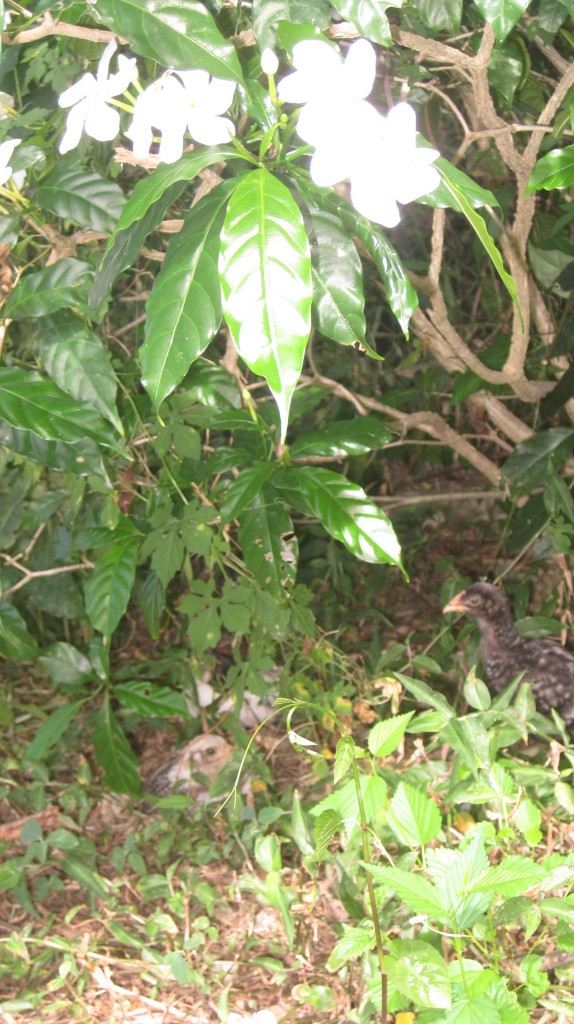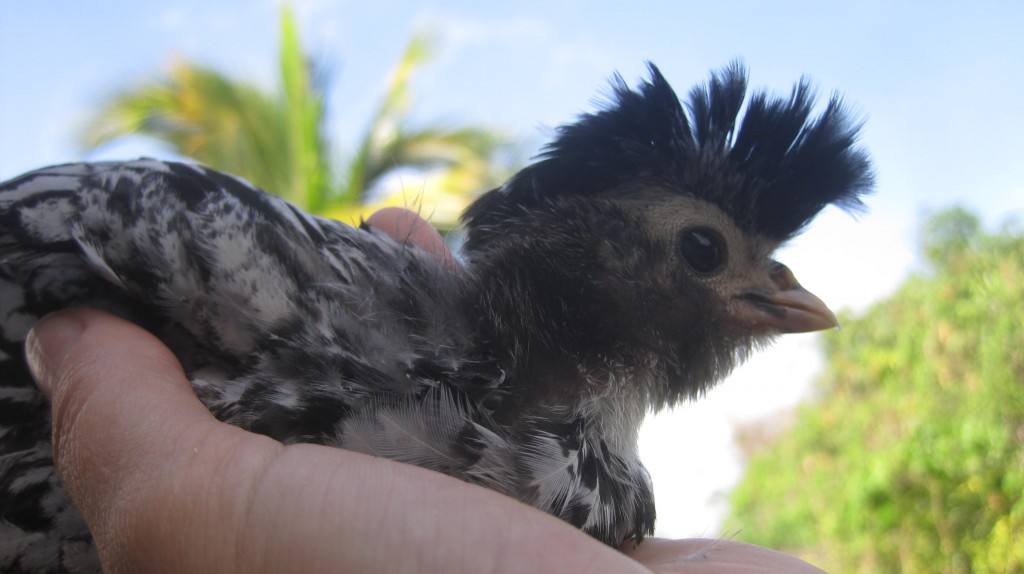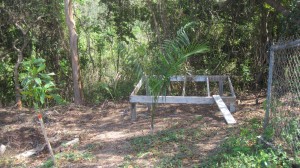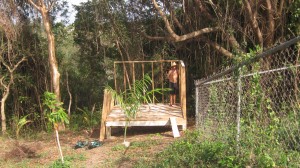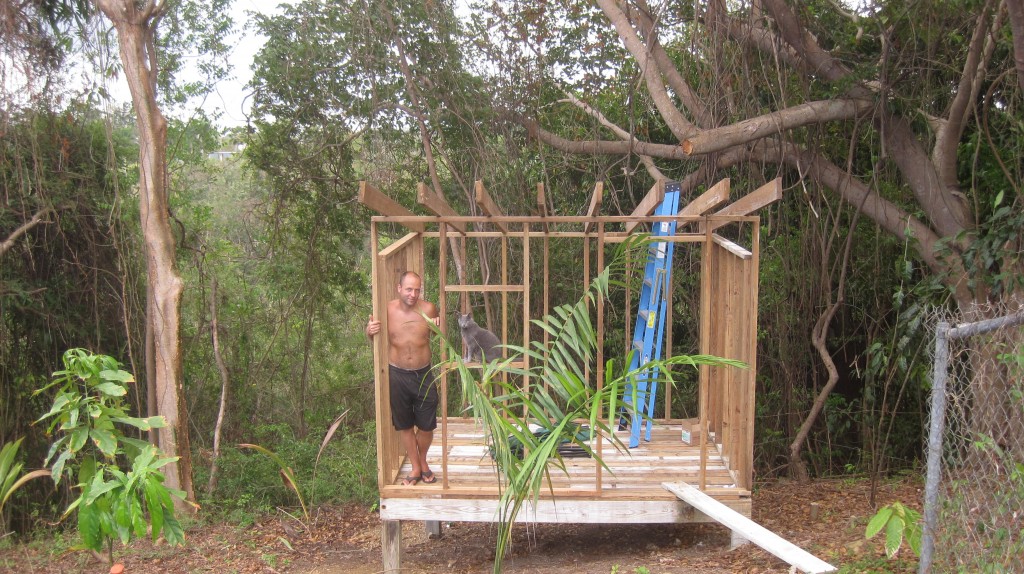The other day we had a chicken escape from the coop. We can’t catch 1 chicken easily at first. It takes about 10-15 minutes for them to start to miss the flock at which point I can grab one of the other chickens to use as bait and then the escapee will just walk over to me and I can pick her up and put them both back.
We went up to the cabana for a while and I decided that I should go put the chicken away before we forget. I walked down and as soon as I turned the corner I saw a huge hawk standing at about 2 and a half feet tall on the ground next to the coop. It took my brain a few seconds to realize what was going on. As I looked I saw that the hawk is probably the ugliest monster I’ve seen out here so far. It was actually shocking at first and I think that is what took my brain the longest to react. “What the hell is that?!?” On the ground they are not the soaring majestic creatures they are in the sky!
I finally figured out what was going on, that the hawk was on top of our stray chicken and was staring at me and giving me that “What are you going to do, human?” look. Well I grabbed the biggest rock I could find, threw it while yelling at the stupid thing. I missed with the rock, and it tried to fly away with the chicken. The chicken was too heavy and it fell into the brush. I yelled for Cassie to come out and she showed up happy to see that I was ok, but she was confused as to what was going on. I gave her a short version of the story “Hawk, big, I scared it, it flew away and dropped the chicken over here somewhere!!” she helped me to find the chick and when we found her she was still alive.
It didn”t take long to figure out that the chicken couldn’t walk. She could move her neck and her legs, but sat mostly sideways and couldn’t stand up. We have read that the hawks know how to paralyze their prey and it appears that is what it did to our chicken- or immobilized her at the least.
We waited a day and it just wasn’t doing any better. She just layed there on her side and looked unhappy. Not eating, not drinking. I decided that rather than having it suffer and die in the house, it was an opportunity to learn how to butcher a chicken, something we haven’t done yet. So I got my supplies ready, read up on how to butcher and skin a chicken and did the deed. We skinned her rather than pluck her because there is so little meat on a 8-9 week old chicken.
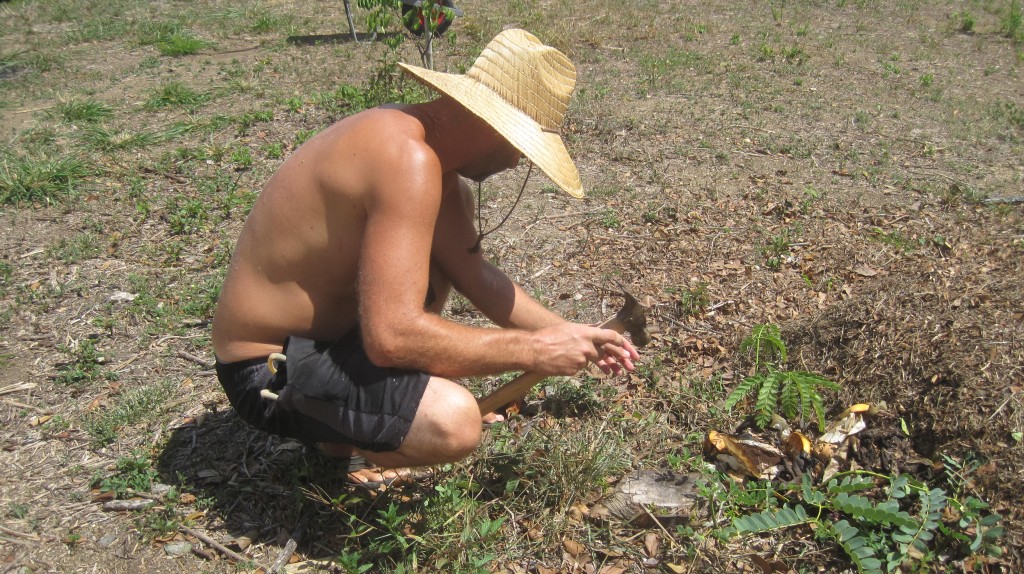
Preparing an Old Stump for a Chopping Block
It was fairly easy to actually kill the chicken once it had been decided. The hardest part was that we didn’t actually want to cull her; we were caring for her and were hoping for her eggs! But we were doing it because it was necessary. We thanked the chicken for her life. There was very little blood and it was over very quickly. The skinning and removal of organs was very quick as well. Within 10 minutes after the first chop we were grilling the small amount of meat that resulted. Talk about fresh!
After we ate the little meat that there was we reflected on the entire event that had unfolded. We, for the first time in a long time, came face to face with the fact that when we eat meat, we are eating a formerly living breathing creature. That life must eat life to live! The chickens, the hawks, us! We all are in a cycle of life and death. We also reflected that we are so far removed from that basic fact that it seemed so strange to kill and eat our own food -or even grow it for that matter. Shouldn’t it be the other way around? Shouldn’t it feel weird to NOT be connected to the food we eat? The food that incorporates into our body and forms us? I have eaten a lot of chicken, but this was the first time I felt that I understood the emotion that is involved with taking a life to feed ourselves. The chicken we buy in the stores is totally sanitized of life, even though it too is killed.
I can see why people raise factory chickens and buy butchered processed meat. It’s easier. It is easier to raise a chicken in a 100% controlled environment where hawks and predators cannot get them and the chicken itself can’t get away. It is easier to not be faced with killing, with death.
In the factory model, part of the plan is to remove us from the killing. Another part of the plan is to control the chickens’ environment as close to 100% as possible to avoid hawks, skunks, foxes and whatever else may want to kill and eat them from doing so. It removes the emotion so that we can treat life like a sterile factory component instead of the full down and dirty details that make life, life.
I can’t treat chickens like that. I can’t leave them cooped up all day, they LOVE to peck and forage in the dirt for their food. We only let them out when we can watch them and protect them from hawks until they get bigger, but occasionally they might escape like this unlucky chicken. And I suppose this means that a hawk or me, might catch and kill one of them from time to time. So be it. The chickens live a life worth living and I have a meal worth eating that I appreciate so much more than those factory chicken meals. I am glad that I was able to learn and prepare my own food and I am glad this chicken got to be outside often and forage for food and do what a chicken does. We are learning a lot out here and are growing as people. As for the other chickens, our hope is that as they get bigger the hawks will leave them alone and the roosters will do a good job of protecting the flock. It is all a big learning curve.

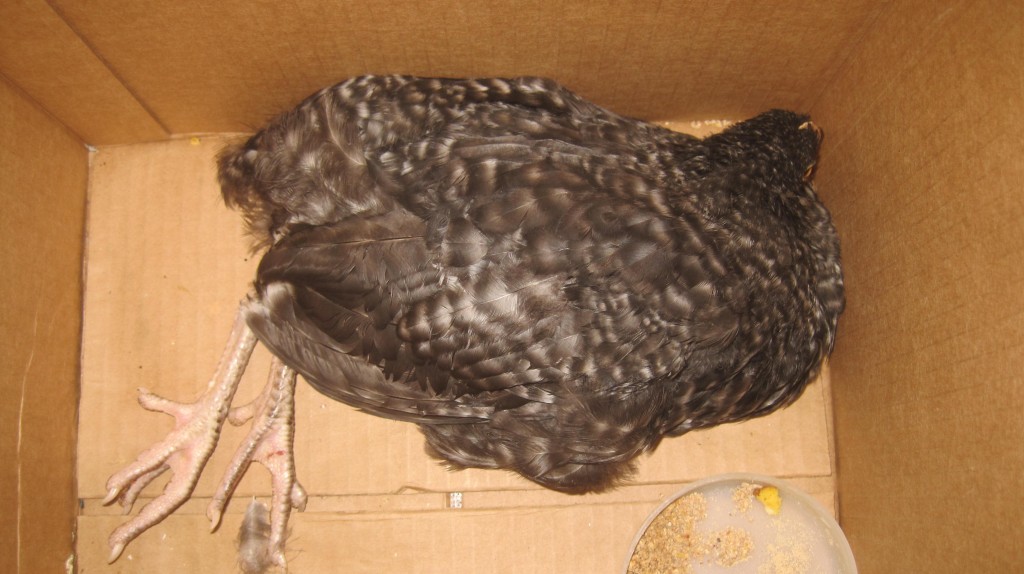
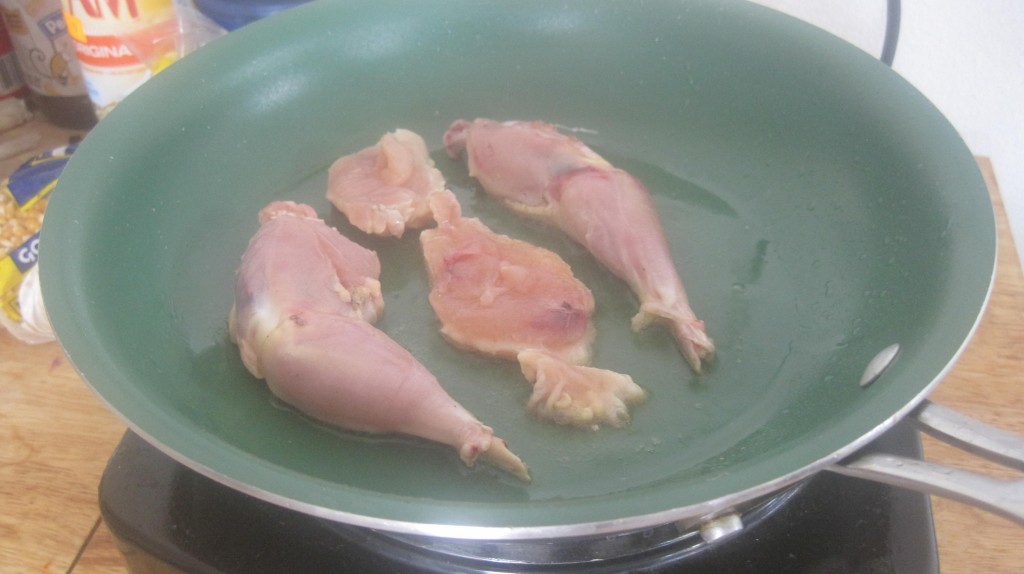
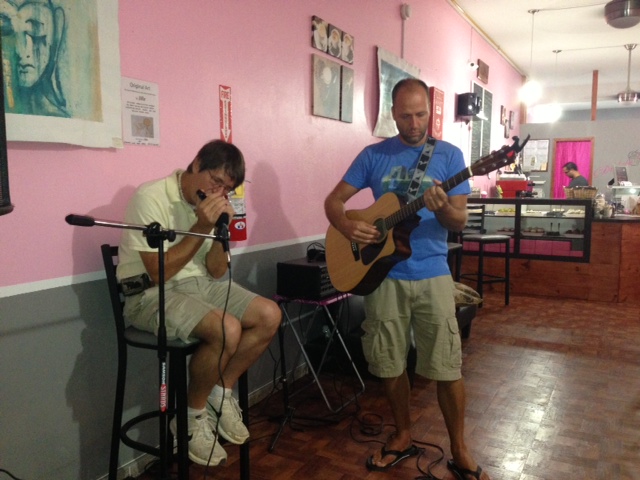
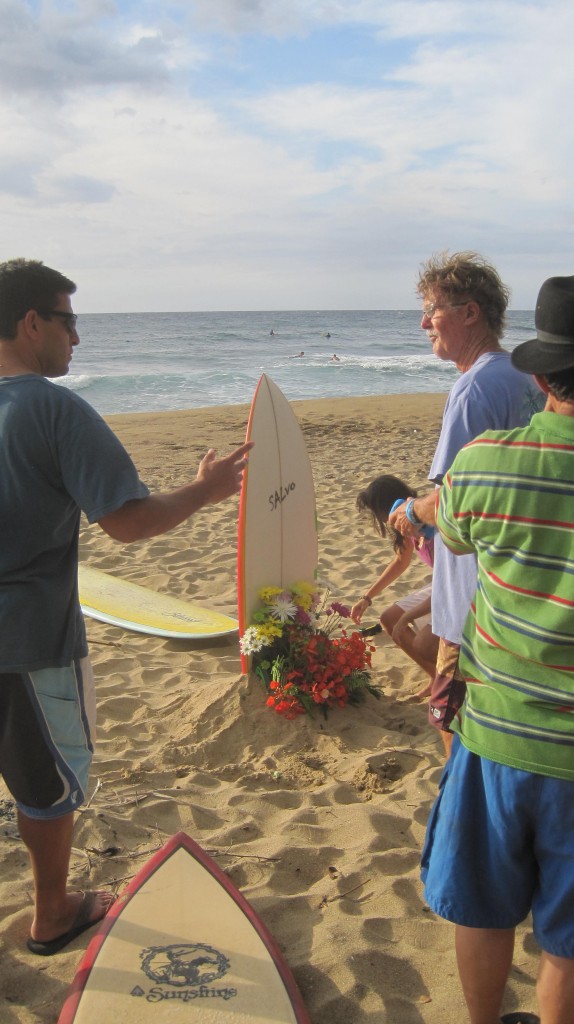
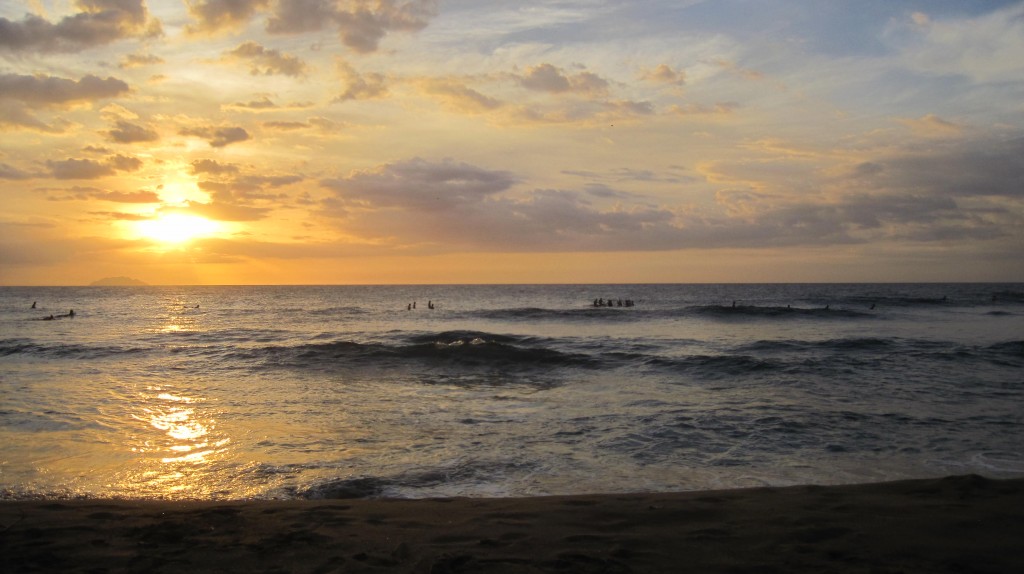
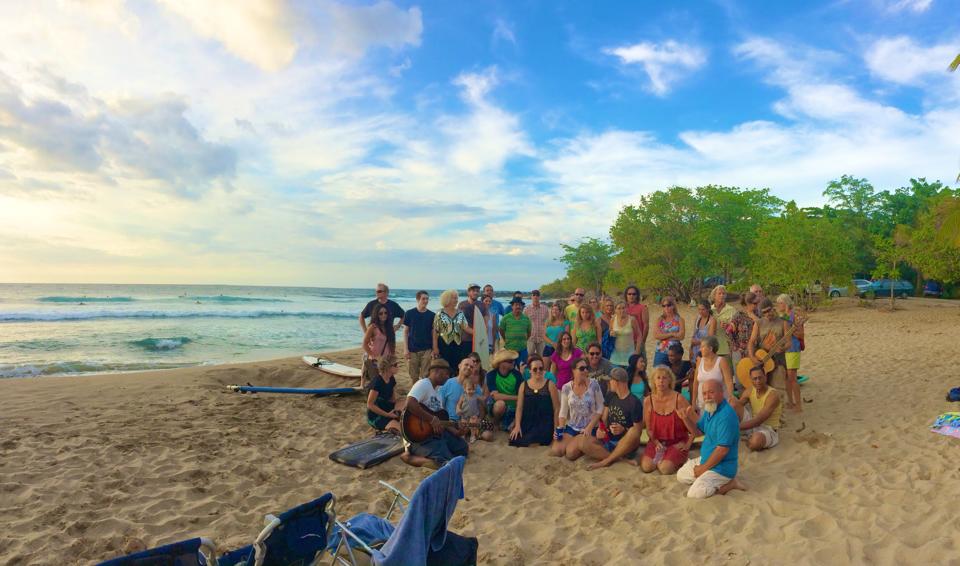 We have such a wonderful community!
We have such a wonderful community!